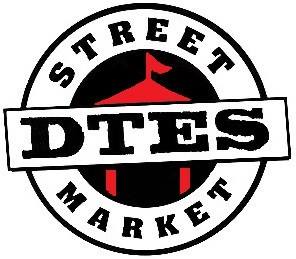Urban Acupuncture: A focus on the Pigeon Park Street Market

by Wendee Lang
From street hawkers to pop-up parks, from the New York High Line to Barcelona’s La Boqueria, urban acupuncture materializes in many different ways. Its principle, however, remains static in that it is seeks to re-energize communities through small-scale design innovation.
An antidote to more often prioritized, top-down, infrastructural change, urban acupuncture explores bottom-up, grassroots design that is both low-cost and low-impact. Requiring a detailed understanding of the communities it seeks to improve, planners are encouraged to identify gaps in services and potential connection points, all while remaining sensitive to the identity and needs of the neigbourhood.
In many ways, it is a more “philosophical approach to urban planning.”
“Sometimes just one stroke of creativity is acupuncture powerful enough to make progress,” states Jaime Lerner, a global proponent of the movement whose belief in urban acupuncture largely guided the city planning of Curitiba, Brazil in the ’70s and ‘80s.
This creativity serves as an opposing force to “industrious mediocrity” brought with rapid, homogenous development. Above all, however, it lends legitimacy to public spaces by encouraging increased use, and fosters understanding between city-dwellers in its desire to connect residents and blur the boundaries between work, play, and living.
Examples of urban acupuncture have spread across Vancouver in recent years, from City Studio’s “Keys to the Streets” campaign, to the creation of the “Robson Redux.” Both have successfully enhanced existing public space, encouraging greater use by and interaction between residents.
Traditionally, vulnerable communities have most benefited from urban acupuncture initiatives, Lerner’s Curitiba serving as a prime example. During his tenure as mayor, a severe gap in the provision of utilities was identified in the city’s surrounding slums. Believing that the perception of the problem was far greater than its reality, Lerner devised a way of threading electrical cables and water pipes along the handrails bordering the steep staircases of the favelas.
Charging nominal fees for use, residents of this part of the city found their day-to-day life quite improved, while the initiative’s planning and implementation provided the favelas, often overlooked by planners, a sense of legitimacy. Investments in time, planning and resources imbue neighbourhoods with a sense of pride, particularly when done through bottoms-up design. Often, projects encourage city-dwellers from elsewhere to visit and utilize newly revitalized public spaces, forging connection between those of disparate backgrounds and resources.
In Vancouver’s Downtown Eastside, a neighbourhood often identified by its homeless population and drug abuse, this type of encouraged connection is invaluable. It discourages community outsiders from using labels such as “addict” to homogenize residents, instead allowing insight into the diversity and vivacity of the neighbourhood.
A fixture on Carrall Street since 2010, the Sunday Downtown Eastside Street Market is exemplary of urban acupuncture, providing such connections. Its recent application to move to a permanent location promises to increase its positive impact. An example of local entrepreneurship, the market allows as many as 200 vendors from the DTES to sell salvaged goods, which would otherwise be fodder for the landfill. Organized by a small group of volunteers and funded by the City of Vancouver, a concerted effort is made to ensure that the market is run efficiently, and that its integrity is not compromised by the presence of stolen goods.
It is, in many ways, an open-air thrift store.
Vendors, who are able to sell for free and avoid the purchase of an $800 street vending license, use the income to supplement social assistance. For many, the market supports the right of residents to work, while also recycling income back into the local economy.
Having applied to relocate to 58 West Hastings, the promise of a permanent home is an alluring prospect for the market. “By legitimizing and organizing activity that already takes place, the community shows that it is open to creating a better neighbourhood, and provides a way to keep the same neighbours without displacement of the low income population,” reads the DTES Street Market Operation Plan. The hope is to eventually increase the frequency of the market, an interest supported by many street vendors and community members.
With permanence, increased frequency and legitimacy, the market’s success as an instance of urban acupuncture will no doubt grow. Providing methods for connection between marginalized individuals and other Vancouverites, suffusing the local economy with income, and legitimizing the needs of the DTES through support from the City, will no doubt make the market a shining example of grassroots urban design.